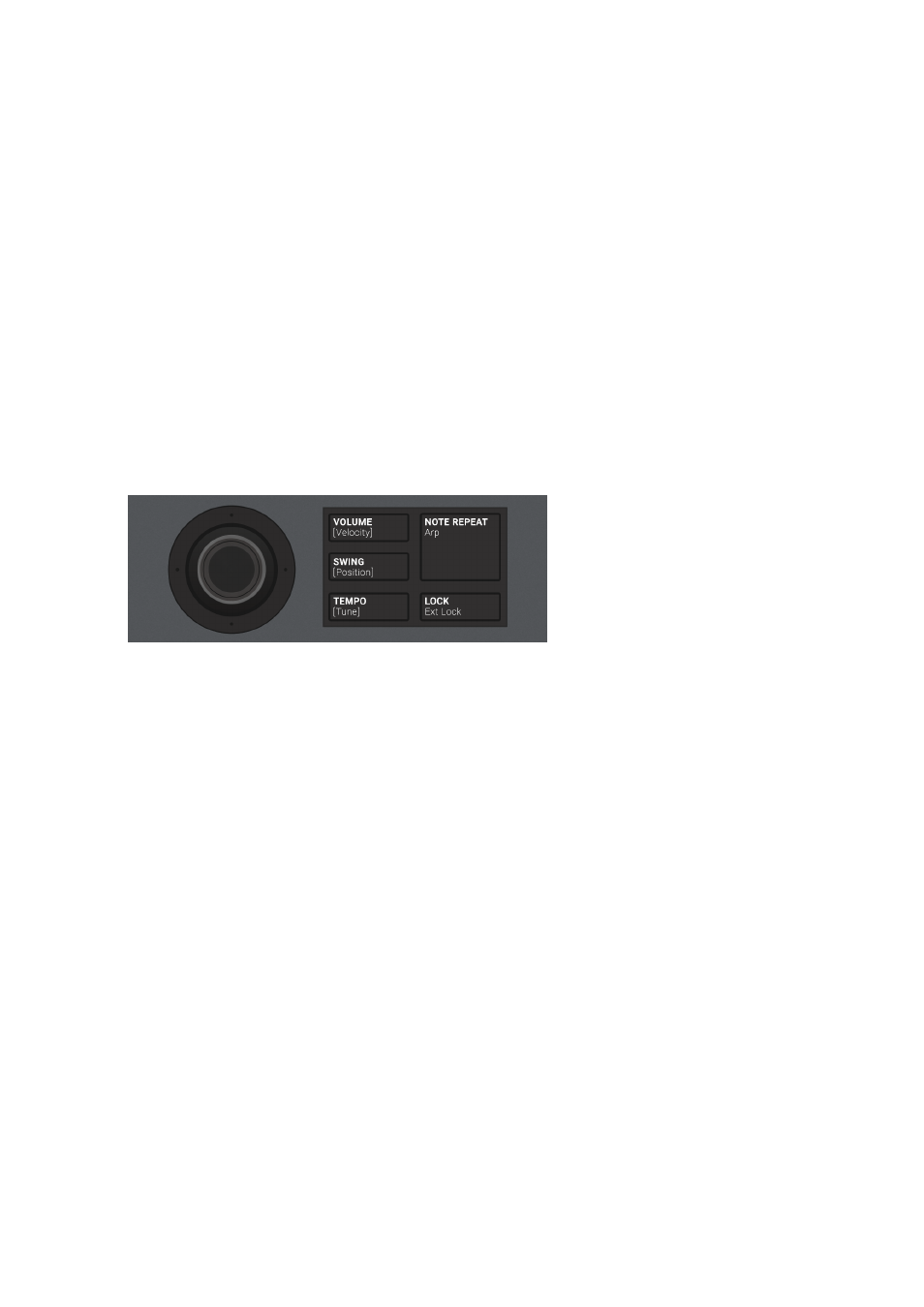Common operations, Using the 4-directional push encoder, Modes and mode pinning – Native Instruments MASCHINE+ Standalone Production and Performance Instrument User Manual
Page 37

6. Common Operations
This section introduces a few very common operations in MASCHINE+ you will encounter in
numerous situations.
6.1. Using the 4-Directional Push Encoder
The 4-Directional Push Encoder (referred to as the 4-D encoder) combines the functionalities of a
conventional joystick, of a button, and of a continuous encoder. These aspects make it into a
multi-functional control element that can be used for navigation, for adjusting values of
parameters and controlling instruments. Hence, it can be moved to the four directions: up, down,
left, and right, as well as being pushed and rotated.
The 4-D encoder situated to the left of the
VOLUME
,
SWING
, and
TEMPO
buttons
Depending on the menu or context, the available actions differ:
• The displays are navigated by moving the 4-D encoder in a direction indicated by the
surrounding LEDs.
• Entries in a list are browsed by turning the 4-D encoder.
• The value of a highlighted parameter is adjusted by turning the 4-D encoder.
• A selection is confirmed by pushing the 4-D encoder.
6.2. Modes and Mode Pinning
MASCHINE+ has many different modes of operation.
In addition to the default Control mode (in which the pads trigger your Sounds), there are many
other modes for accomplishing various tasks. These modes are enabled by specific buttons, for
example,
SCENE
,
CHORDS
,
BROWSER
, etc.
For some of these modes, you need to hold the button to keep the mode active. For example,
when you press the
SOLO
button, the displays will show Solo-specific control options; when you
release the button, it MASCHINE+ switches back to the previous mode.
The buttons that are required to be held are in the middle column (left of the pads) along with the
NOTE REPEAT
and
AUTO
button:
COMMON OPERATIONS
30
